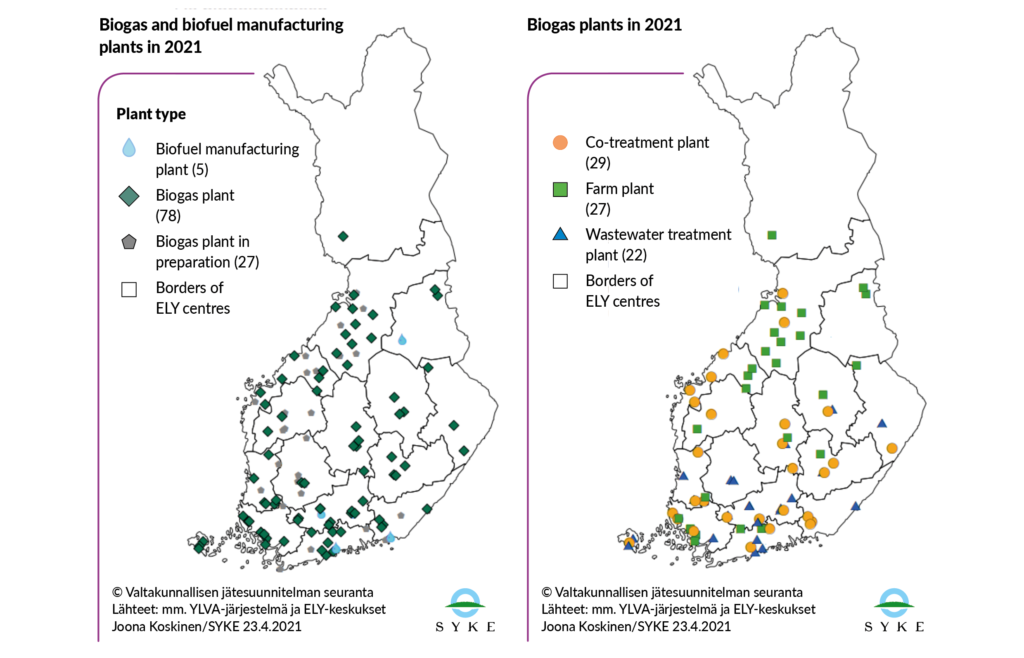Biological waste
Biodegradable waste
Biowaste means biodegradable garden and park waste, food and kitchen waste from households, offices, restaurants, wholesale, canteens, caterers and retail premises and comparable waste from food processing plants. Biodegradable waste is even wider group of material inclunding all substances degrading biologically. In municipalities, that can also include e.g. wastewater sludge, by-products from industries and farms.
From 2016 landfilling biological waste has been prohibited. This has increased utilization levels significantly. Now, biowaste is used to produce compost and biogas.
Biological treatment
In Finland biowaste and wastewater sludges from the municipalities and industry are processed in the biological treatment plants. In 2020, 186 composting plants were operational in Finland, most of which were windrow composting plants. Windrow composting is mainly used as a post-composting method of wastewater sludge. There has been a strong shift from composting to anaerobic digestion of biodegradable waste. Composting is becoming a post-treatment of already digested waste. Most of the new biological treatment plants under design or in construction are biogas plants. Composting and biogas plants are owned by municipalities, governmental companies, or private companies (including biogas plants in farms).

In 2021, there are 78 biogas plants in Finland. Biogas plants can be divided into co-treatment plants. farm plants and wastewater sludge treatment plants. Co-treatment plants treat a variety of biowastes with agricultural manure and wastewater sludges. Farm plants deal with manure as well as other organic waste and by-products of agriculture.
In addition to the widely used wet digestion plant, dry digestion plants are becoming more common. Dry digestion differs from the traditional wet digestion plants as the process uses solid materials, which usually have a dry matter content of about 30%. In this case, the amount of wastewater from the plant requiring treatment is also lower.
In Finland, ethanol is made from biowaste to be used e.g. as transport fuel. There are several plants manufacturing biowaste ethanol in Finland. Plants use municipal biowaste or waste from the food industry to manufacture ethanol.

Biogas
Ever tightening emission reduction targets have increased the interest of the industry, agriculture and transport sectors in biogas and biomethane, as well as boosting nutrient recycling. Both biogas production and demand have grown steadily in Finland and Europe. The biogas industry has potential in terms of raw material exploitation and biogas production. New carbon neutrality targets, need for improving the national self-sufficiency of energy and nutrients, advancing the vitality of the regions and emission reduction targets for transport and agriculture create opportunities for the biogas.
Biogas sector should make a clear shift from waste management towards the production of energy and recycled nutrients. The low profitability of biogas production is challenging, as the end-product markets (energy and nutrient) are still developing. Until recently the low price of fossil fuels also slowed down the development of the biogas industry. It is estimated that in 2030 biogas production could be even up to 4-7 TWh. Production would be based specially on the utilization of by-products from the agriculture, but also new technologies and feeds would have an important role (e.g. gasification). In 2035, biogas production could be 6-15 TWh.

